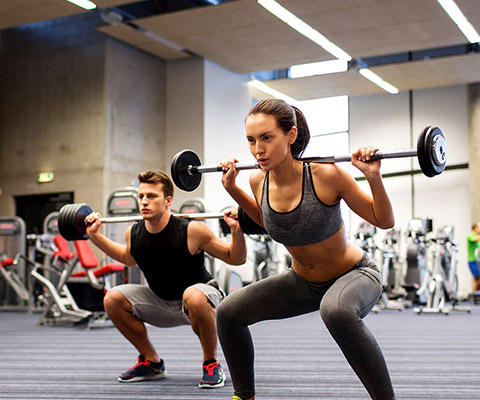In the realm of Muay Thai, the shins serve as powerful weapons, vital for delivering devastating strikes and blocks. However, to wield them effectively, they must be properly conditioned to withstand the rigors of intense Training and combat. This guide unveils the techniques and strategies essential for conditioning your shins in Muay Thai, empowering you to maximize your striking power and resilience in the ring.
Understanding the Importance of Shin Conditioning
In Muay Thai, fighters frequently utilize their shins to execute kicks, blocks, and strikes. Thus, conditioning the shins is paramount to endure impacts and minimize injury risks. Shin conditioning fortifies the bones and soft tissues of the lower leg while desensitizing nerves, enabling fighters to execute potent strikes without undue pain.
Gradual Progression and Patience
Effective shin conditioning demands patience , consistency, and proper technique. Rushing the process or exerting excessive force can lead to injuries and setbacks. Commence with gradual intensity and duration increments, allowing the shins to adapt progressively. This approach builds strength and resilience while mitigating injury risks.
Essential Techniques for Shin Conditioning
1. Bag Work: Employ heavy bags and Thai pads for striking drills. Begin with light to moderate strikes, gradually escalating force as your shins adapt. Emphasize proper technique and form to optimize training effectiveness.
2. Check Training: Integrate check training into your regimen to condition shins for blocking kicks and strikes. Partner drills and sparring sessions facilitate practice while toughening the shins over time. Use shin guards during sparring to minimize injury risks.
3. Kicking Drills: Engage in various kicking drills like roundhouse, deep, and low kicks. Initiate with low to moderate intensity, progressively amplifying power and speed. Focus on technique and follow-through for maximal impact.
4. Conditioning Exercises: Integrate specific exercises to strengthen shins and enhance resilience. Shin taps, shin raises, and calf raises target lower leg muscles and bones, augmenting their ability to endure impact and stress.
Prioritize Recovery and Maintenance
Beyond conditioning, prioritize adequate recovery and maintenance to ensure shin health and longevity. Post-training, apply ice and topical analgesics to mitigate inflammation and discomfort. Incorporate stretching and mobility exercises to enhance flexibility and prevent muscle imbalances that predispose to injuries.
Advantages of Proper Shin Conditioning
1. Enhanced Striking Power: Well-conditioned shins allow fighters to deliver strikes with increased force and accuracy. By toughening the bones and soft tissues of the shins, fighters can generate more power behind their kicks and punches, making them more effective in combat situations.
2. Reduced Risk of Injury: Conditioning the shins helps minimize the risk of injury during Training and competition. Stronger bones and muscles can withstand impact, reducing the likelihood of fractures, bruises, and other common injuries associated with Muay Thai.
3. Improved Endurance: Conditioning exercises for the shins also improve overall lower leg endurance. As the muscles become stronger and more resilient, fighters can maintain high performance throughout extended training sessions and fights without succumbing to fatigue or pain.
4. Increased Confidence: Knowing that their shins are properly conditioned gives fighters confidence in their abilities. This mental assurance allows them to execute techniques with greater precision and aggression, ultimately enhancing their performance in the ring.
Advanced Conditioning Techniques
1. Shin Rolling: Shin rolling involves using a rolling pin or PVC pipe to apply pressure to the shins, gradually increasing intensity over time. This technique helps desensitize the shins’ nerves and toughen the surrounding tissues, making them more resistant to impact.
2. Hard Surface Training: Training on hard surfaces such as concrete or wooden floors can further toughen the shins. By repeatedly striking or blocking against solid surfaces, fighters can strengthen their bones and develop a higher pain tolerance in the shins.
3. Traditional Thai Conditioning Methods: In Thailand, fighters often employ traditional conditioning methods such as kicking banana trees or hitting them with sticks to toughen their shins. While these methods may seem extreme, they effectively develop resilient shins capable of withstanding powerful strikes.
Incorporating Shin Conditioning into Your Training Routine
To incorporate shin conditioning into your training routine, consider the following tips:
1. Consistency is Key: Shin conditioning is a gradual process that requires consistent effort over time. Make it a regular part of your training regimen to see significant results.
2. Listen to Your Body: Pay attention to any discomfort or pain during conditioning exercises. While some discomfort is normal, excessive pain may indicate that you’re pushing too hard and risking injury.
3. Balance Conditioning with Recovery: While it’s important to condition your shins, allowing for adequate rest and recovery is equally crucial. Alternate conditioning sessions with lighter training days to prevent overuse injuries and promote healing.
By incorporating these advanced conditioning techniques and strategies into your training routine, you can take your Muay Thai skills to the next level and become a more formidable fighter in the ring. We’re dedicated to helping our members achieve their fitness and martial arts goals. Join us today and experience the transformative power of Muay Thai training.

